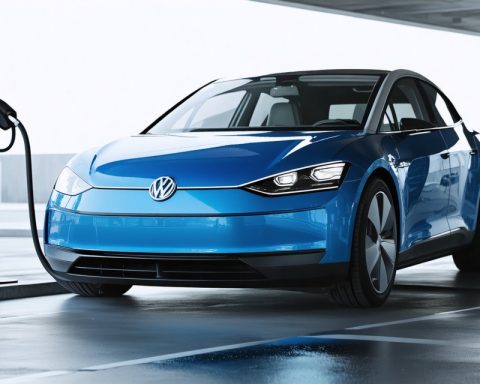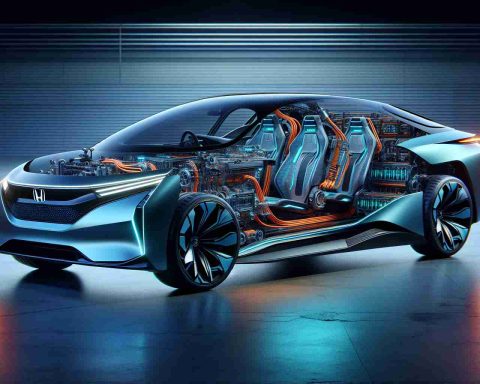- Electric vehicles (EVs) offer reduced carbon footprints and lower fuel costs, presenting an eco-friendly transport solution.
- EV options range from affordable models like the Chevrolet Bolt and Nissan Leaf to luxury brands such as Porsche, with prices from $30,000 to over $100,000.
- Consider hidden costs like home charging system installation, as charging is not free despite savings on gasoline.
- EV maintenance is typically less expensive due to fewer moving parts, though managing battery life is essential.
- Planning beyond the initial purchase price is crucial to fully benefit from long-term savings and environmental advantages.
Picture this: a sleek electric vehicle (EV) glides effortlessly through your neighborhood, all but silent except for the subtle hum of its electric motor. It’s more than just a glimpse into the future—it’s the present creeping into our everyday reality. The allure of these eco-friendly machines is undeniable, promising reduced carbon footprints and lower fuel costs. Yet, is this shift from gasoline to electrons as seamless—or as cost-effective—as it appears?
Aspiring EV owners find themselves at a crossroads, faced with a deluge of choices from budget-friendly models like the Chevrolet Bolt and Nissan Leaf to luxurious high-tech powerhouses like Porsche. The price tags, ranging from $30,000 to over $100,000, are only the beginning. The journey doesn’t end when you drive off the lot.
Begin your EV adventure by considering the hidden costs. You’ll save on gas, yes, but charging an electric car isn’t free. Factor in the installation of a home charging system, a must for hassle-free daily usability. Many find that while maintenance for EVs is generally cheaper—fewer moving parts mean fewer problems—understanding and managing battery longevity is crucial. Learn the art of balance between cost and convenience.
As you stand at the edge of this electric revolution, armed with this knowledge, weigh your options carefully. The key takeaway? Plan beyond the price tag. Be prepared for the initial costs, but also embrace the long-term savings and environmental benefits. Welcome to the road ahead—clean, green, and deceptively complex.
Is Owning an Electric Vehicle (EV) Really Worth It? Discover the Hidden Costs and Benefits
How-To Steps & Life Hacks: Navigating Your Electric Vehicle Purchase
1. Assess Your Driving Needs: Determine your average daily miles and research EV models with adequate ranges. Consider factors like climate, which can affect battery performance.
2. Evaluate Your Charging Options: Explore public charging infrastructure near your home and workplace. For home charging, check if your electrical setup supports a Level 2 charger, which significantly reduces charging time.
3. Incentives and Rebates: Look into federal and state incentives. Many regions offer tax credits and rebates that can significantly reduce upfront costs.
4. Plan for Maintenance: While EVs have fewer mechanical parts, ensure you’re prepared for battery maintenance and replacement costs over time.
Real-World Use Cases
– Commuters: With increasing urban traffic and charging facilities, EVs offer cost savings for daily commuters.
– Rideshare Drivers: High mileage can maximize fuel savings, with lower maintenance providing further financial benefits.
Market Forecasts & Industry Trends
According to the International Energy Agency (IEA), global EV sales are projected to reach over 20 million units annually by 2030. This trend is driven by increasing environmental regulations and consumer demand for sustainable transport options.
Reviews & Comparisons
– Chevrolet Bolt vs. Nissan Leaf: Both models are budget-friendly with ranges around 250 miles. The Bolt offers a slightly longer range, while the Leaf is praised for its comfort.
– Tesla Model 3 vs. BMW i4: Tesla offers extensive infrastructure and cutting-edge technology, while the BMW provides a luxurious experience akin to traditional petrol-powered vehicles.
Controversies & Limitations
– Battery Production Impact: Environmental concerns about lithium mining and battery disposal remain significant.
– Range Anxiety: Despite improvements, limited range and charging infrastructure can be discouraging.
Features, Specs & Pricing
– Chevrolet Bolt: Starts around $31,000, offering a range of 259 miles and fast charging capability.
– Tesla Model 3: Priced from $40,000, providing a range of up to 358 miles and access to Tesla’s Supercharger network.
Security & Sustainability
– Security: EVs come with advanced anti-theft technology, and over-the-air updates can improve security continuously.
– Sustainability: Renewable energy sources for charging can dramatically improve your EV’s carbon footprint.
Insights & Predictions
Experts predict improvements in battery technology, increasing ranges, and decreasing production costs, making EVs more accessible to the masses.
Tutorials & Compatibility
– Home Charging Setup: Hire a certified electrician to install a Level 2 charger to reduce charging times to just a few hours.
– Software Updates: Keep your EV’s software updated for optimal performance and security.
Pros & Cons Overview
Pros:
– Environmental benefits
– Lower operational costs
– Reduced maintenance requirements
Cons:
– Higher upfront costs
– Battery degradation
– Charging infrastructure variability
Actionable Recommendations
– Explore Incentives: Take advantage of federal and local incentives to lower initial costs.
– Optimize Charging: Use a Level 2 home charger for convenience and lower electricity rates for cost efficiency.
– Plan Trips: Use apps like PlugShare or ChargePoint to plan trips around charging station availability.
– Stay Updated: Follow EV industry trends to anticipate future developments and ensure informed decision-making.
For more insights into electric vehicles, visit Tesla’s official website. Explore the sustainable options leading the charge towards a greener future.
















